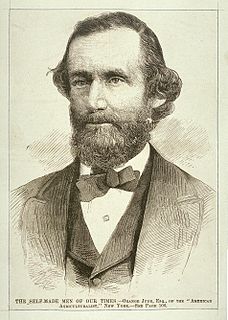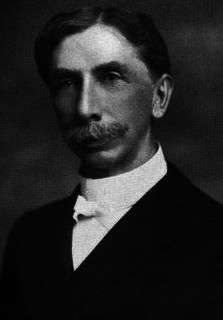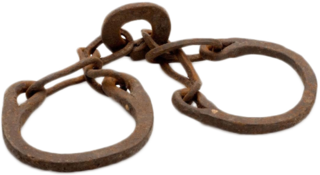Related Research Articles

Harriet Elisabeth Beecher Stowe was an American author and abolitionist. She came from the Beecher family, a famous religious family, and became best known for her novel Uncle Tom's Cabin (1852), which depicts the harsh conditions experienced by enslaved African Americans. The book reached an audience of millions as a novel and play, and became influential in the United States and in Great Britain, energizing anti-slavery forces in the American North, while provoking widespread anger in the South. Stowe wrote 30 books, including novels, three travel memoirs, and collections of articles and letters. She was influential both for her writings and for her public stances and debates on social issues of the day.

Wesleyan University is a private liberal arts university in Middletown, Connecticut. Founded in 1831 as a men's college under the auspices of the Methodist Episcopal Church and with the support of prominent residents of Middletown, the college was the first institution of higher education to be named after John Wesley, the founder of Methodism. It is now a secular institution.

James William Charles Pennington was an African-American orator, minister, writer, and abolitionist active in Brooklyn, New York. He escaped at the age of 19 from slavery in western Maryland and reached New York. After working in Brooklyn and gaining some education, he was admitted to Yale University as its first black student. He completed studies and was ordained as a minister in the Congregational Church, later also serving in Presbyterian churches for congregations in Hartford, Connecticut; and New York. After the Civil War, he served congregations in Natchez, Mississippi; Portland, Maine; and Jacksonville, Florida.

John McClintock, American Methodist Episcopal theologian and educationalist, was born in Philadelphia.

Charles Henry Payne (1830–1899), a clergyman, revised the hymn-book of the Methodist denomination in the late 19th century. He was president of Ohio Wesleyan University and an author.

Orange Judd was an American agricultural chemist, editor, and publisher.

Henry White Warren (1831–1912) was an American Methodist Episcopal bishop and author, brother of William Fairfield Warren.
The Mystical Seven is a society founded in 1837 at Wesleyan University in Middletown, Connecticut. There are two separate groups. Members are called Mystics.
Nathan Daboll, born in Groton, Connecticut, was a Connecticut politician, judge, textbook author, and almanac publisher.

Robert Carter Pitman was a Superior Court judge in Massachusetts, a temperance advocate, and a legislator in the Massachusetts General Court.
William Callyhan Robinson was an American jurist and academic.

Augustus William Smith was an educator, astronomer and mathematician in the mid-19th century.
The 1842 Slave Revolt in the Cherokee Nation was the largest escape of a group of slaves to occur in the Cherokee Nation, in what was then Indian Territory. The slave revolt started on November 15, 1842, when a group of 20 African-American slaves owned by the Cherokee escaped and tried to reach Mexico, where slavery had been abolished in 1829. Along their way south, they were joined by 15 slaves escaping from the Creek Nation in Indian Territory.

Robert Morris was one of the first African-American attorneys in the United States, and was called "the first really successful colored lawyer in America."

Isaac J. Lansing (1846–1920) was the president of Clark Atlanta University from 1874 to 1876, and the pastor at Park Street Church in Boston, Massachusetts from 1893 to 1897.

The exact date of the first African slaves in Connecticut is unknown, but the narrative of Venture Smith provides some information about the life of northern slavery in Connecticut. Another early confirmed account of slavery in the English colony came in 1638 when several native prisoners were taken during the Pequot War were exchanged in the West Indies for African slaves. Such exchanges become common in subsequent conflicts.
Joel Henry Cooper was an American physician, pharmacist and abolitionist from Wisconsin who served as a Free Soil Party member of the Wisconsin State Assembly. He was the father of Congressman Henry Allen Cooper.
Gilmore High School, also called Cincinnati High School, was established by Rev. Hiram S. Gilmore in 1844 to provide secondary education for African-American students. Students at the school in Cincinnati, Ohio came from across the country, including the children of white Southern planters and the African Americans they enslaved.
John Orville Newton was a school principal and state representative in Maine. Newton served as the principal of Kents Hill School for 24 years. He was succeeded by Thomas Wess Watkins.
Theodore Hinsdale was an American lawyer and politician from New York.
References
- ↑ Conn.), Wesleyan University (Middletown (April 27, 1911). "Alumni Record" – via Google Books.
- ↑ Thompson, Eleanor Wolf (April 27, 1947). "Education for Ladies, 1830-1860: Ideas on Education in Magazines for Women". King's Crown Press – via Google Books.
- ↑ Williams, George Washington (April 27, 1883). "History of the Negro Race in America from 1619 to 1880: 1800-1880". G.P. Putnam's Sons – via Google Books.
- 1 2 "History of the Schools of Cincinnati: And Other Educational Institutions, Public and Private". The compiler. April 28, 1900 – via Google Books.
- ↑ of 1841, Yale University Class (April 27, 1892). "Semi-centennial Historical and Biographical Record" – via Google Books.
- ↑ Conn.), Wesleyan University (Middletown (April 27, 1883). "Alumni Record of Wesleyan University, Middletown, Conn". Press of the Case, Lockwood & Brainard Company – via Google Books.
- ↑ Payne, Charles M.; Green, Adam (August 27, 2003). Time Longer Than Rope: A Century of African American Activism, 1850-1950. NYU Press. ISBN 9780814767030 – via Google Books.
- ↑ Tate, G. (June 12, 2019). The Black Urban Community: From Dusk Till Dawn. Springer. ISBN 9781349735723 – via Google Books.
- ↑ "[Subscription letter for legal defense of John "Vansandt" (Van Zandt), who helped a fugitive slave]| Gilder Lehrman Institute of American History". www.gilderlehrman.org.
- ↑ Robertson, Stacey (November 26, 2013). Betsy Mix Cowles: Champion of Equality. Avalon Publishing. ISBN 9780813347714 – via Google Books.
- 1 2 Hamm, Thomas D. (November 22, 1995). God's Government Begun: The Society for Universal Inquiry and Reform, 1842--1846. Indiana University Press. ISBN 0253114713 – via Google Books.